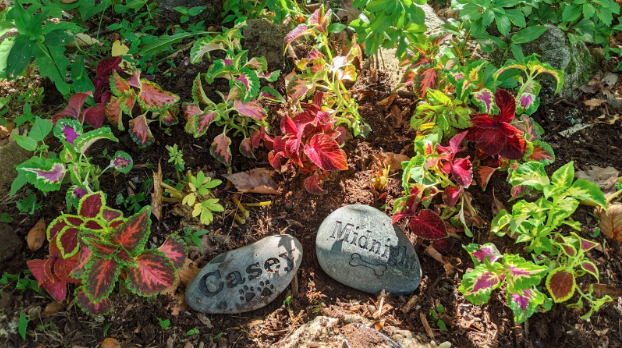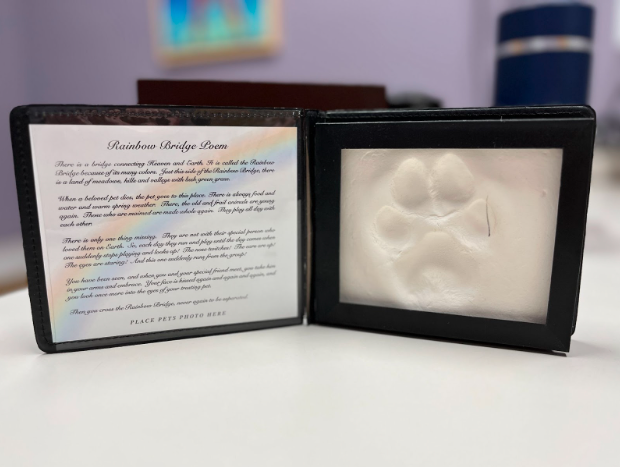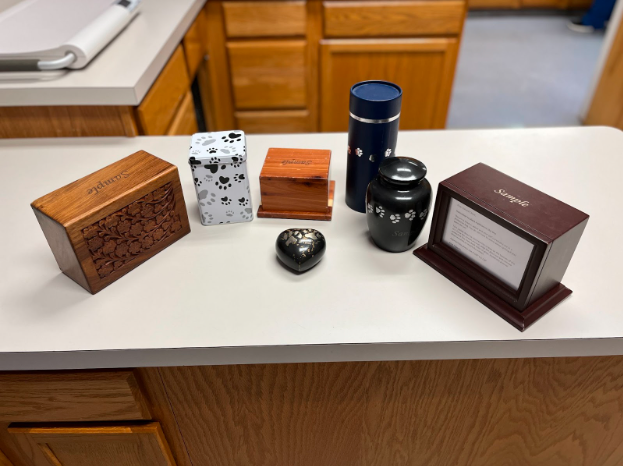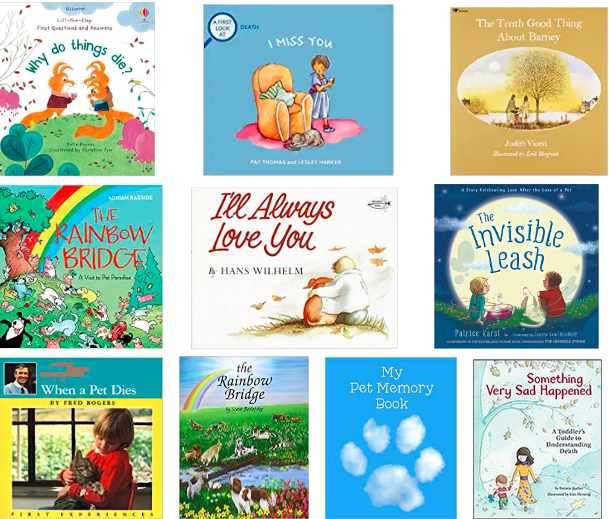When It’s Time to Say Goodbye
Today I want to talk about something very near and dear to my heart. Performing euthanasia is an essential part of veterinary medicine. The word “euthanasia” is derived from a Greek word meaning “good death” (www.oxfordreference.com). I looked up the definition of euthanasia on several dictionary sites – Merriam Webster, Brittanica, Wikipedia – all of them essentially define it as an easy or painless death – either by actively causing the death or by passively permitting the death of an individual with a terminal condition. Passively permitting death is how hospice care works for human beings, whereas veterinarians who perform euthanasia have a more active role. When an animal is suffering from one or more painful or debilitating conditions it is time to have a conversation with your veterinarian and with your family about a peaceful, painless death with dignity. Sometimes the cause of the suffering is fairly clear – cancer, kidney failure, heart failure, end-stage osteoarthritis, significant cognitive dysfunction, liver failure, and uncontrollable frequent seizures. Other times it is less clear cut – maybe we don’t have a full diagnosis but it is clear that your dog or cat* is not doing well, or maybe it’s a lot of little things that have all begun to add up to a poor quality of life.
*I will say “dog or cat” a few times during the blog for brevity, but this really applies to any beloved pet – rabbit, guinea pig, ferret, chinchilla, horse, goat, parrot, tortoise, etc.
It can be really hard to make the call that “it’s time,” like if a dog or cat is not doing well overall, but still has good days here and there. Talking with your veterinarian about your cat or dog’s own personal situation can be really helpful, but I have a few additional references that may also be useful. There is something out there called the HHHHHMM scale – this was first published by Dr. Alice Villalobos, a veterinary oncologist. It became well known after it was published in her book Canine and Feline Geriatric Oncology: Honoring the Human-Animal Bond, Blackwell Publishing, 2007. It is supposed to help you “score” your pet’s quality of life-based on certain criteria – Hurt, Hunger, Hydration, Hygiene, Happiness, Mobility, and More Good Days than Bad. Each of these criteria is given a score of 1-10. You can see how your pet is doing on any given day and also track trends.
Here is a simple, printable version of the HHHHHMM scale:
https://caringpathways.com/wp-content/uploads/2018/02/QualityofLifeScale.pdf
Dr. Katie Hilst of Journeys Home Pet Euthanasia, a team of hospice and palliative care veterinarians based out of Wisconsin, has made a very nice Quality of Life calculator that you can use online:
https://journeyspet.com/pet-quality-of-life-scale-calculator/
So often when the time comes to discuss the quality of life I hear “but Doc, I really wish she would just pass away in her sleep at home.” That sounds nice, and sometimes it does happen that way. But other times, it’s not fair to wait – with some of these diseases the body shuts down very slowly, and it can take days of not eating and drinking before the body fully quits. I watched this happen to my father when he passed away from ALS and it is not pretty. It is also really unnecessary to put an animal through that. Cats and dogs live in the moment. Taking their pain away at the end is the last gift we can give them.
If you do end up deciding that it is time for euthanasia, we (or your veterinarian) will have a discussion with you either before you come in or when you get to the appointment about what the process is and what the options are for aftercare. If a house call is requested we try to accommodate it when possible, but there are also veterinary practices that are solely devoted to hospice care and house call euthanasias, such as Lap of Love: https://www.lapoflove.com/.
No two euthanasias are the same, but the typical process that we use for in-office euthanasias is that we borrow your cat or dog briefly to place a catheter in their front leg. We do this so we have reliable access to the vein, but also an extended line that allows us to give you some space to be next to them, talking to them, holding them, lying down next to them. When you are ready (and you can take as much time as you need to say goodbye) we will give the first injection which is an overdose of anesthesia. This is usually followed by a flush of sterile saline. All your cat or dog will feel is that they are falling asleep. Once they are in deep sleep the anesthesia will stop their heart but they will have no idea it is happening. This is a very peaceful way to pass and if you choose you can be right there with them, the last voice they hear, the last face they see. You can spend time with them after they have passed as well.
I had two elderly dogs pass somewhat recently, one in 2019 and one in 2021 – both rescues that I had adopted at 1-1.5 years old and passed at an estimated 14-15 years old. After the first one passed I started a memorial garden, complete with wind chimes. I know people who have planted trees in honor of their pets and others who have gotten paw print tattoos or cremation jewelry. There are many ways to honor and remember a pet after they pass. Below are some links to pet loss support groups and additional links that can help with grief if you need it:
https://www.aspca.org/pet-care/general-pet-care/end-life-care
https://belovedcompanions.com/our-services/grief-support/
https://connecticut.networkofcare.org/mh/services/agency.aspx?pid=SOULFRIENDSPetLossSupport_2_556_1
https://www.vet.cornell.edu/impact/community-impact/pet-loss-support-hotline
https://vet.tufts.edu/pet-loss-support-hotline
http://www.petlosshelp.org/bereavementresources.html
And finally, parents – it can be hard to figure out how to explain to your young kid what is happening. I do not recommend making things up to avoid the conversation – there are better options than “she went to live on a farm upstate” or “he ran away.” Below are links to some books for kids about pets passing. For younger kids keeping things simple, like “he was sick and we couldn’t make him better so he died” is probably the best way to start the conversation. I have the book “Why do things die?” that I have read to my kids several times in the past two years for both the passing of our elderly dog and my father – it states things simply and answers questions very directly. Below are some books that can be ordered from Amazon, your local bookstore, or potentially your local library.
Until next time,
–Dr. Dana Muir




